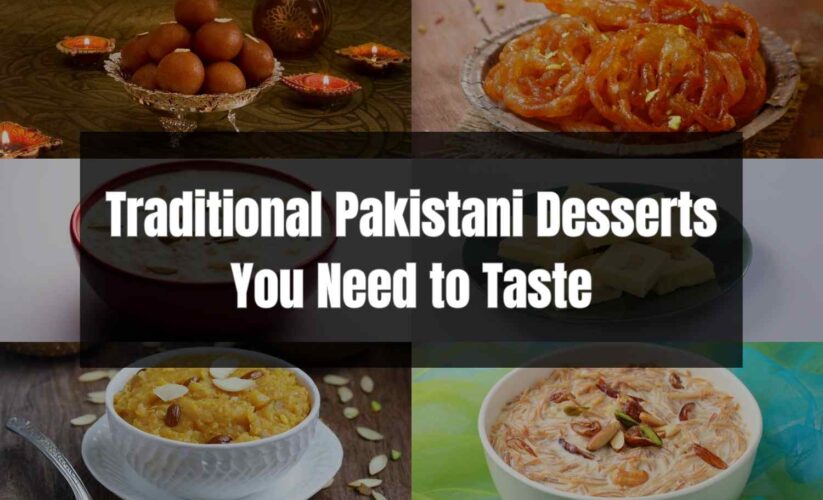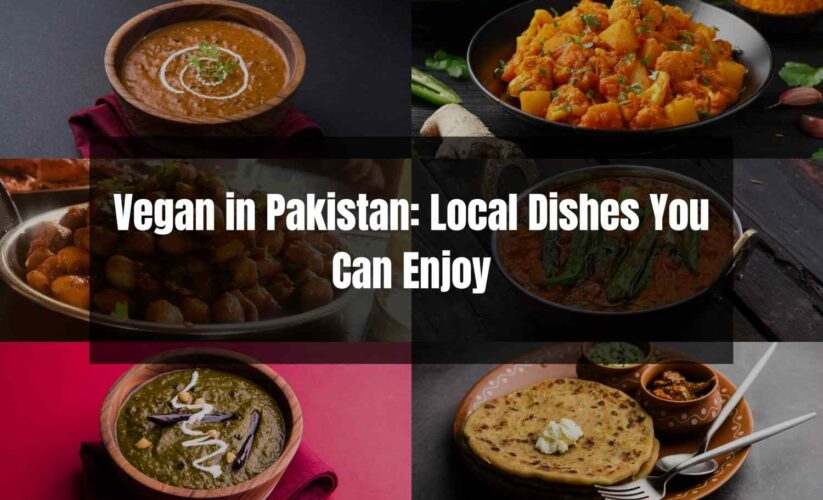
Traditional Pakistani Desserts You Need to Taste
Pakistan is rich in culture, history, and, most importantly, culinary diversity. Pakistani cuisine offers various flavors, from spicy street food to hearty main courses. But when it comes to desserts, Pakistan stands out with its unique blend of sweet treats that reflect the country’s heritage and regional diversity. Traditional Pakistani desserts are deeply rooted in the country’s cultural fabric, influenced by centuries of South Asian, Middle Eastern, and Central Asian cooking traditions. From creamy, rich confections to delicate, syrup-soaked sweets, there is something to satisfy every sweet tooth.
Moreover, we will take you on a delightful journey through the world of traditional Pakistani desserts at Chef Cooking Resort. Whether you have a sweet tooth or are simply curious about the flavors of this region, these desserts are a must-try for anyone looking to experience the true essence of Pakistani cuisine.
1. Gulab Jamun: The King of Sweets
Gulab Jamun is often referred to as the “king of sweets” in Pakistan and is a beloved dessert across South Asia. These soft, round balls are made from khoya (milk solids) or a mixture of milk powder and flour, deep-fried until golden brown, and then soaked in a fragrant sugar syrup flavored with rose water and cardamom.
The name “Gulab” means rose, and “Jamun” refers to the black plum fruit, which the dessert resembles in shape and size. The syrup adds sweetness and a floral note, making each bite a melt-in-your-mouth experience.
Gulab Jamun is a popular choice for special occasions, festivals, and weddings in Pakistan. Served warm or at room temperature, it pairs beautifully with a dollop of cream or ice cream for an extra indulgent treat.
2. Jalebi: A Spiral of Sweetness
Jalebi is one of the most recognizable and loved street desserts in Pakistan. This bright orange, spiral-shaped confection is made by deep-frying a batter of flour and yogurt, which is then soaked in sugar syrup. The result is a crispy, chewy dessert with a delightful burst of sweetness in every bite.
Jalebi is typically enjoyed fresh and hot, straight from the frying pan. It is commonly served during breakfast with a cup of tea, or as an evening snack. During festivals like Eid or family gatherings, you’ll often find platters of jalebi being passed around.
Its simple yet addictive combination of crispy texture and sweet syrup makes jalebi a favorite dessert for people of all ages.
3. Kheer: Creamy Rice Pudding
Kheer is Pakistan’s version of rice pudding, and it’s a dessert that holds a special place in Pakistani homes. This creamy, slow-cooked dessert is made from rice, milk, and sugar, flavored with cardamom and often garnished with nuts, raisins, or silver leaf for an extra touch of elegance.
The texture of kheer is smooth and rich, with a gentle sweetness that allows the natural flavors of the ingredients to shine. Many variations of kheer exist, with some using vermicelli (seviyan) or even broken wheat instead of rice.
Kheer is often made during religious festivals, family gatherings, and celebrations like weddings. It’s served both warm and cold, and its comforting flavors make it a timeless classic.
4. Barfi: Fudgy Milk Treat
Barfi is a popular dessert that comes in many flavors and forms. However, at its core, Barfi is made from condensed milk solids (khoya), sugar, and ghee (clarified butter). The texture is firm yet creamy, and it can be flavored with a variety of ingredients such as pistachios, almonds, coconut, or mango.
Barfi is often cut into small, square or diamond-shaped pieces and adorned with silver leaf or crushed nuts. It’s a common treat during celebrations like Eid, weddings, or special family events. Whether you try pista (pistachio) barfi, coconut barfi, or plain milk barfi, each bite is rich and satisfying.
5. Halwa: A Warming Dessert with Many Variations
Halwa is a versatile dessert with countless variations across Pakistan, and it is often associated with warmth and comfort. The most popular types of halwa include:
Sooji Halwa:
Made from semolina (sooji), ghee, sugar, and water, this version of halwa has a soft, smooth texture and is often flavored with cardamom and topped with nuts.
Gajar ka Halwa:
This is a winter favorite made from grated carrots, slow-cooked with milk, sugar, and ghee until it transforms into a rich, flavorful dessert. The vibrant orange color and natural sweetness of the carrots make it a stunning and nutritious treat.
Chana Dal Halwa:
Made from split chickpeas (chana dal), this halwa is a bit denser and nuttier in flavor. It’s cooked slowly with ghee and sugar until it reaches a thick, fudge-like consistency.
Halwa is often served during breakfast or special occasions like Eid and is considered a festive dish that brings warmth and sweetness to the table.
6. Sheer Khurma: A Festive Delight
Sheer Khurma is a traditional Pakistani dessert that is synonymous with the Muslim festival of Eid. This dish is a creamy vermicelli pudding made with milk, sugar, dates, and a mixture of nuts such as almonds, pistachios, and cashews.
The name “Sheer Khurma” translates to “milk with dates,” which are a key ingredient in this dessert, adding a natural sweetness. The vermicelli noodles (seviyan) are toasted in ghee before being simmered in milk, creating a rich and flavorful pudding.
Sheer Khurma is typically served on the morning of Eid after the prayers, and it’s a dish that symbolizes celebration and togetherness.
7. Shahi Tukra: Royal Bread Pudding
Shahi Tukra, often called “royal bread pudding,” is a decadent dessert with Mughal origins. It’s made from slices of fried bread soaked in a fragrant sugar syrup, then topped with a rich, creamy mixture of thickened milk (rabri), flavored with cardamom and saffron.
The result is a layered dessert with crispy bread, creamy milk, and a burst of sweet, floral flavors. Shahi Tukra is often garnished with almonds, pistachios, or silver leaf, making it a luxurious dessert that’s fit for royalty.
This dessert is often reserved for special occasions like weddings, Eid, or festive gatherings, where its indulgent flavors leave a lasting impression.
8. Ras Malai: Soft Cheese Dumplings in Cream
Ras Malai is a beloved dessert in Pakistan that combines soft, spongy cheese dumplings (rasgullas) with sweetened, thickened milk flavored with cardamom and saffron. The dumplings are made from paneer (fresh cheese) and are soaked in the creamy milk mixture until they absorb the flavors and become ultra-soft.
The texture of Ras Malai is light and delicate, with a subtle sweetness that isn’t overwhelming. It’s often garnished with a sprinkle of crushed pistachios or almonds, adding a bit of crunch to the otherwise soft dessert.
Ras Malai is a popular dessert served at weddings, family gatherings, and during the festive season, offering a refreshing and satisfying end to a meal.
9. Falooda: A Cool, Refreshing Treat
Falooda is a refreshing dessert drink that’s especially popular during the hot summer months. This layered dessert drink is made with rose syrup, vermicelli, sweet basil seeds, milk, and a scoop of ice cream. Some variations include jelly or fruit to add extra texture and flavor.
Falooda is served cold and offers a combination of flavors and textures that make it both refreshing and indulgent. The sweet, floral taste of rose syrup pairs perfectly with the creaminess of the milk and ice cream, while the vermicelli and basil seeds provide a fun, chewy texture.
This dessert is commonly enjoyed as a cooling treat during summer or after a spicy meal, offering a delicious contrast to the rich, savory flavors of Pakistani cuisine.
10. Khubani ka Meetha: Sweet Apricot Delight
Khubani ka Meetha is a traditional dessert from the Sindh region of Pakistan, made from dried apricots (khubani) stewed with sugar to create a sweet, sticky syrup. The stewed apricots are then topped with fresh cream or custard for a rich, creamy contrast to the sweet fruit.
The natural tartness of the apricots combined with the sweetness of the syrup creates a perfectly balanced dessert. Khbani ka Meetha is often served at weddings, festive gatherings, or special family dinners, and it’s a must-try for anyone who enjoys fruit-based desserts.
Read Also: What is the most famous dessert in India?
Conclusion: The Sweet Essence of Pakistan
Traditional Pakistani desserts offer a rich tapestry of flavors, textures, and cultural significance. Whether you’re indulging in the syrupy sweetness of Gulab Jamun, savoring the creamy richness of Kheer, or enjoying the cool, refreshing taste of Falooda, these desserts are a true reflection of Pakistan’s diverse culinary heritage.
Each dessert tells its own story, often rooted in centuries of tradition and influenced by regional ingredients and cooking methods. From festive occasions to everyday treats, these desserts are an integral part of Pakistani culture and offer a delicious way to experience the warmth and hospitality of the country. If you’re a lover of sweets, make sure to try these traditional Pakistani desserts. Not only will they satisfy your sweet tooth, but they’ll also give you a taste of the rich flavors and cultural history that make Pakistani cuisine so special. Whether you’re enjoying them at a family gathering or indulging in a sweet street-side snack, these desserts are sure to leave you wanting more!




